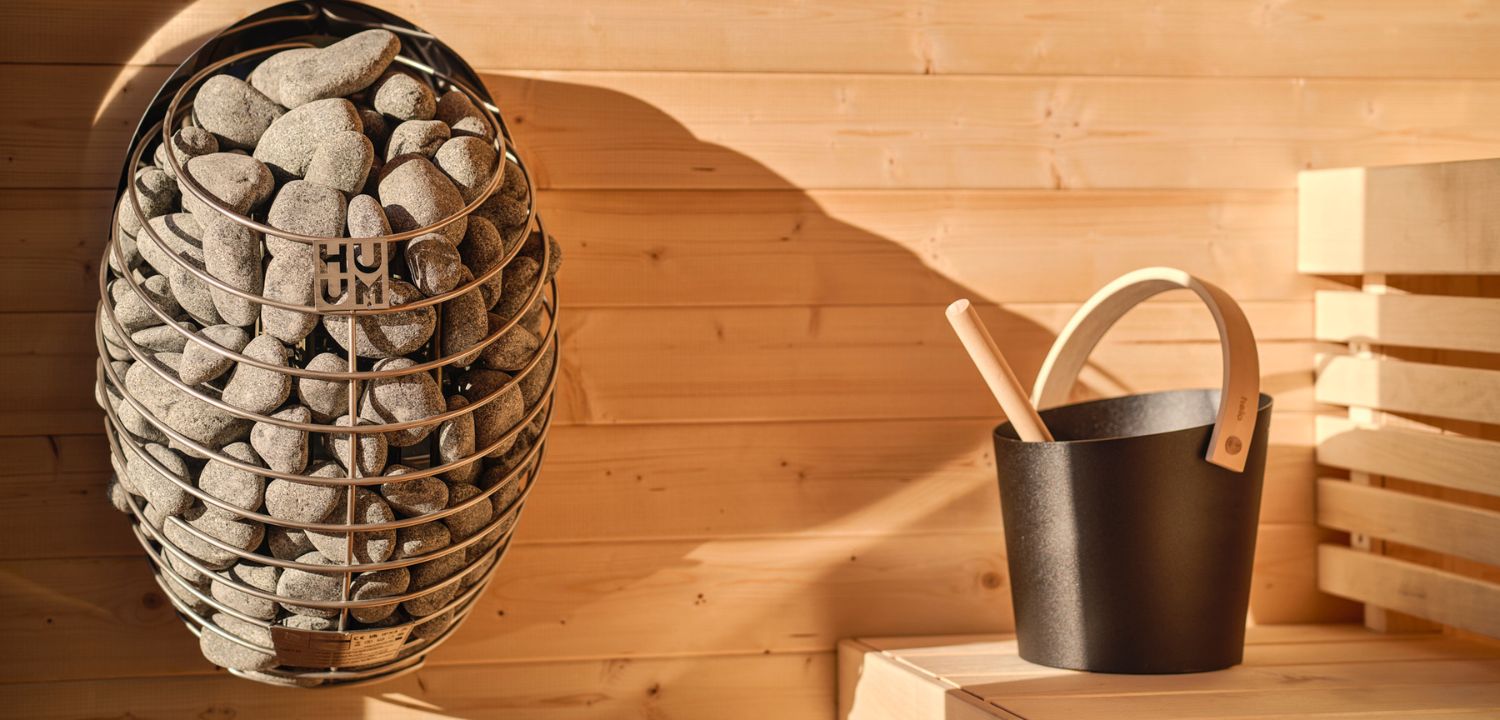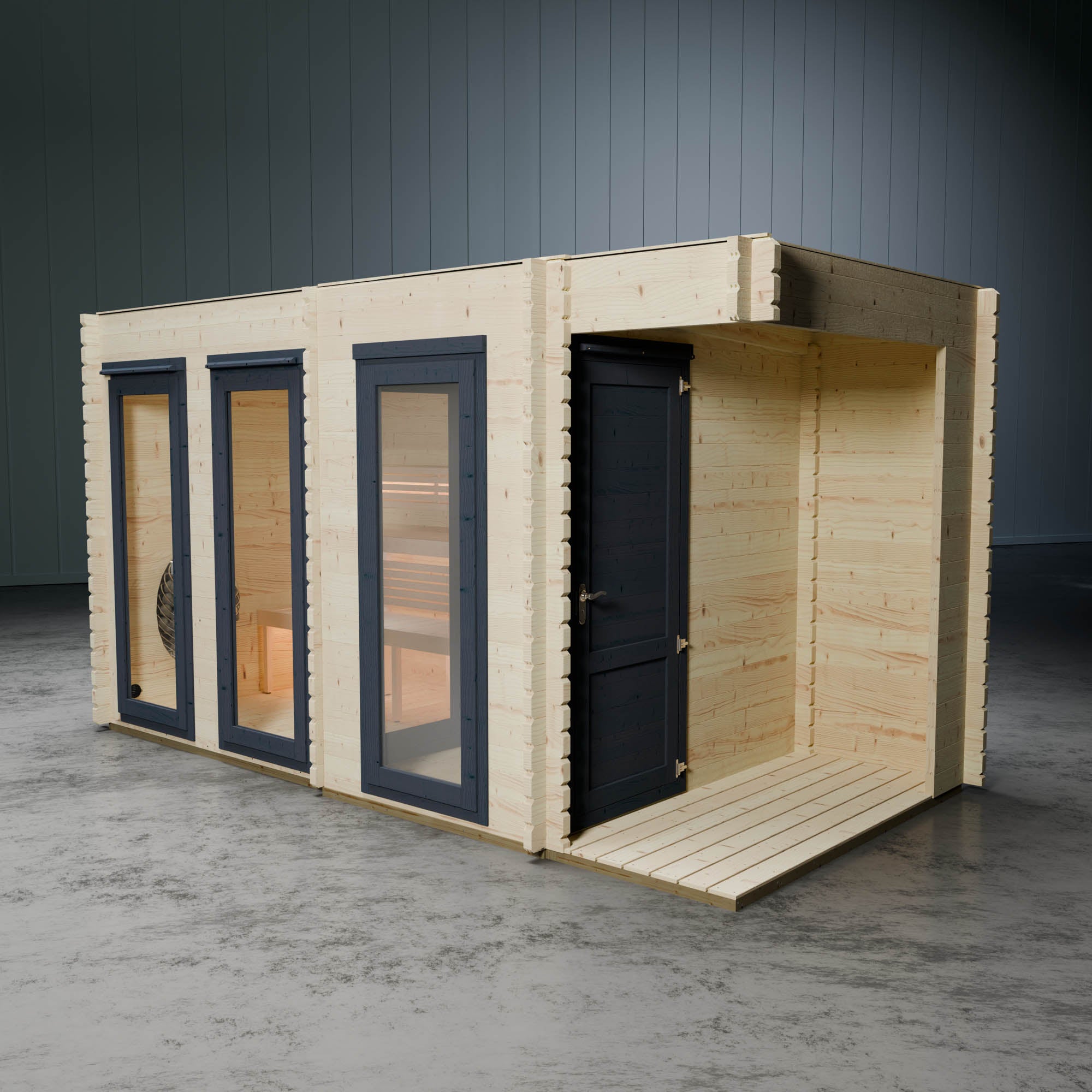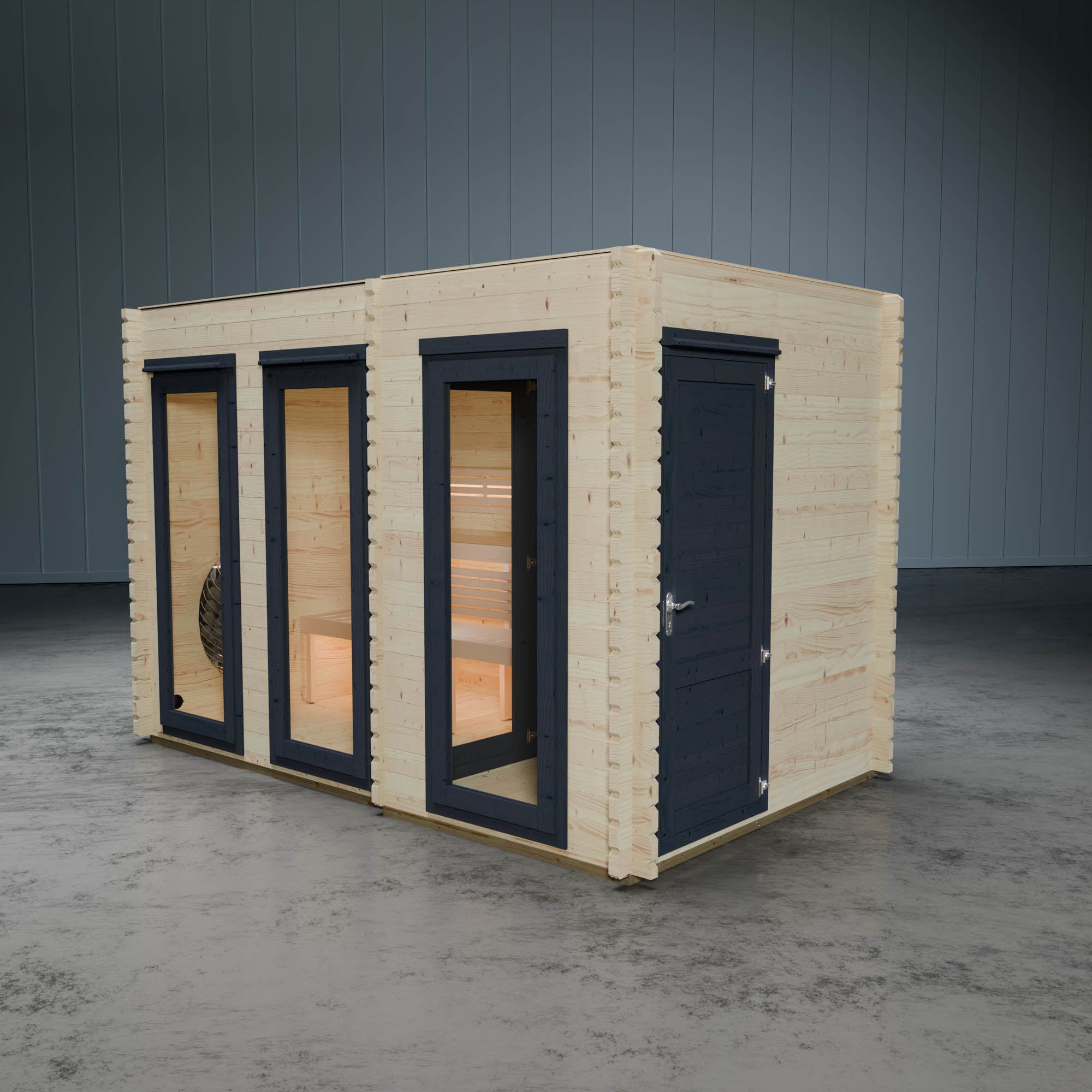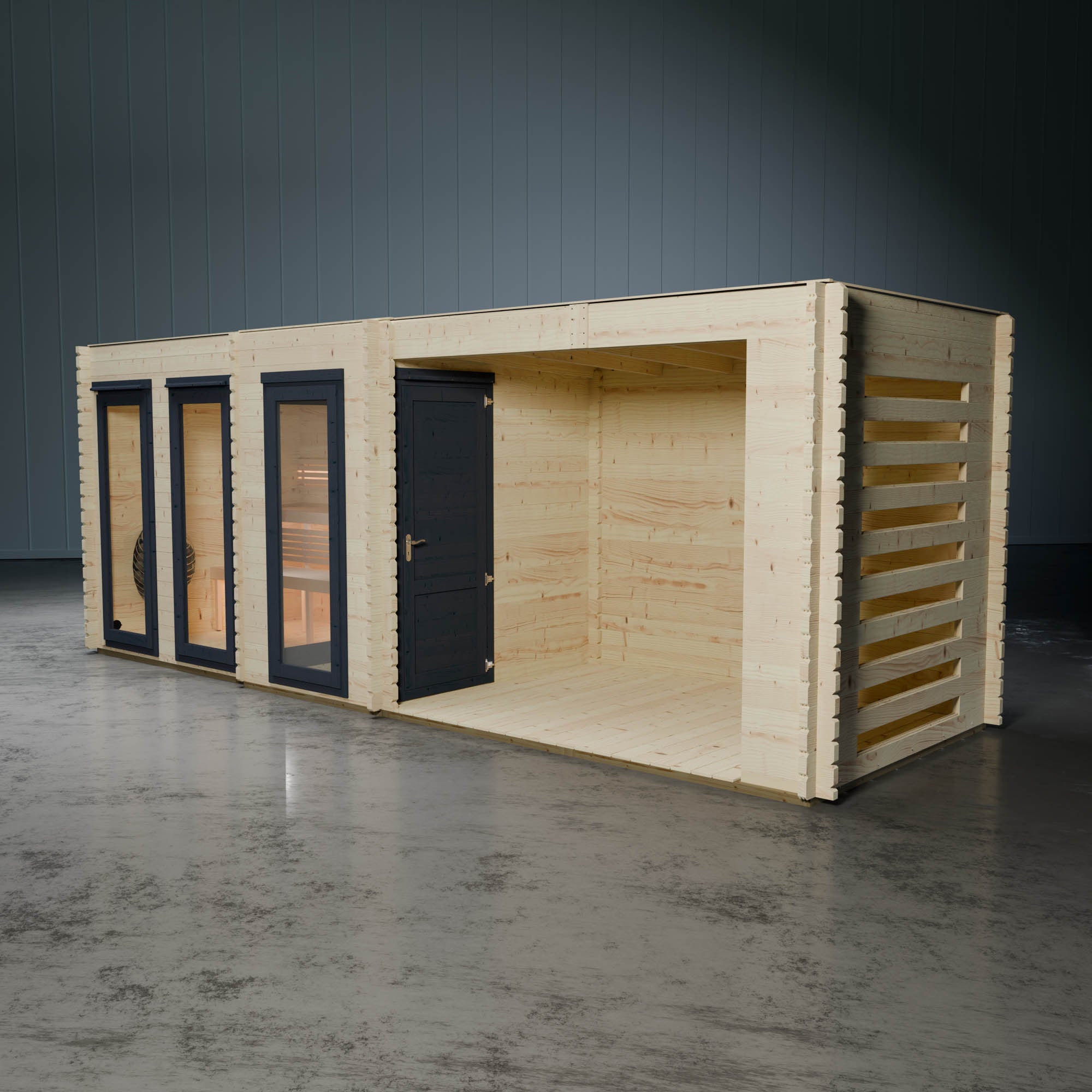Wood-Fired vs Electric: Which Is Better?
Choosing between a wood-fired and electric sauna is one of the biggest decisions when
designing your outdoor wellness space. Both offer unique benefits, but to help you with
your choice, here’s our guide on how to decide which is right for you.
Wood-Fired Saunas
In short: Authentic. Aromatic. Off-Grid.
A wood-burning sauna delivers a traditional experience with natural heat and the soothing sound of crackling fire.
| Benefits: | Considerations: |
|---|---|
- No need for electricity — ideal for remote gardens or for simplicity of installation. |
- Takes longer to heat up (typically 30–60 minutes). |
- Warm, soft heat that feels natural. |
- Requires fuel storage and ash cleaning. |
- The ritual of lighting the fire enhances relaxation, and brings a sense of accomplishment. |
- Temperature control is more hands-on while monitoring the thermostat. |
- Requires qualified installation of the chimney chute. |
Best for: Sauna enthusiasts who love authenticity and natural ambience.
Electric Saunas
In Short: Effortless. Efficient. Modern.
Electric heaters make owning a sauna simple and convenient.
| Benefits: | Considerations: |
|---|---|
- Heats up quickly (15–30 minutes). |
- Requires a power connection and a qualified electrician to install. |
- Thermostat or app control for precise temperatures available as optional extras on a lot of models. |
- May slightly increase running costs. |
- Minimal maintenance. |
- Lacks the rustic charm of real wood smoke. |
Best for: Busy homeowners who want reliability and simplicity.

Our Verdict
If you value tradition and atmosphere, go for a wood-fired sauna. If you prefer ease and convenience, an electric sauna is the smarter choice.
Whichever you choose, both deliver the same health benefits , improved circulation, stress
relief, and a true spa-like experience in your garden.
Saunas
Novi Outdoor Sauna With Changing Room and Small Veranda
Novi Outdoor Sauna With Changing Room
Novi Outdoor Sauna With Changing Room and Large Veranda





